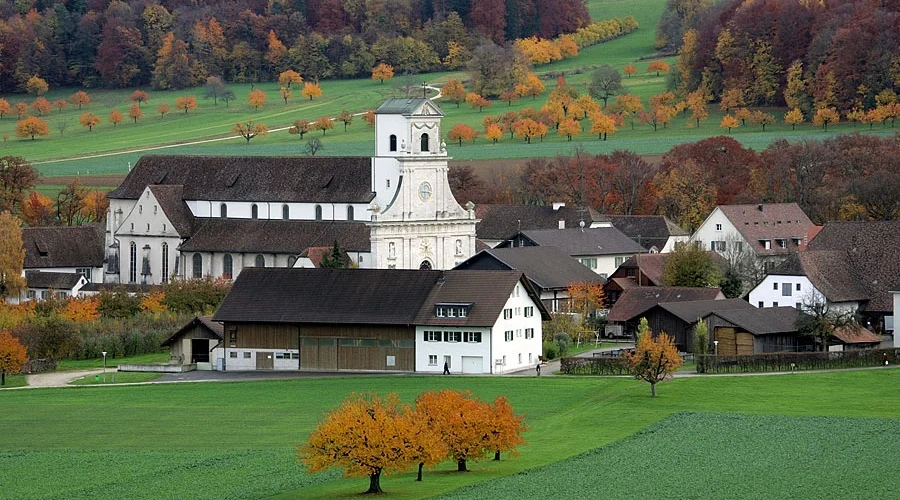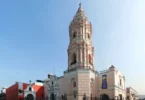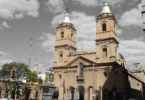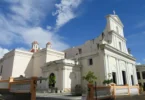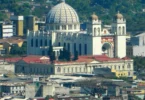Introduction
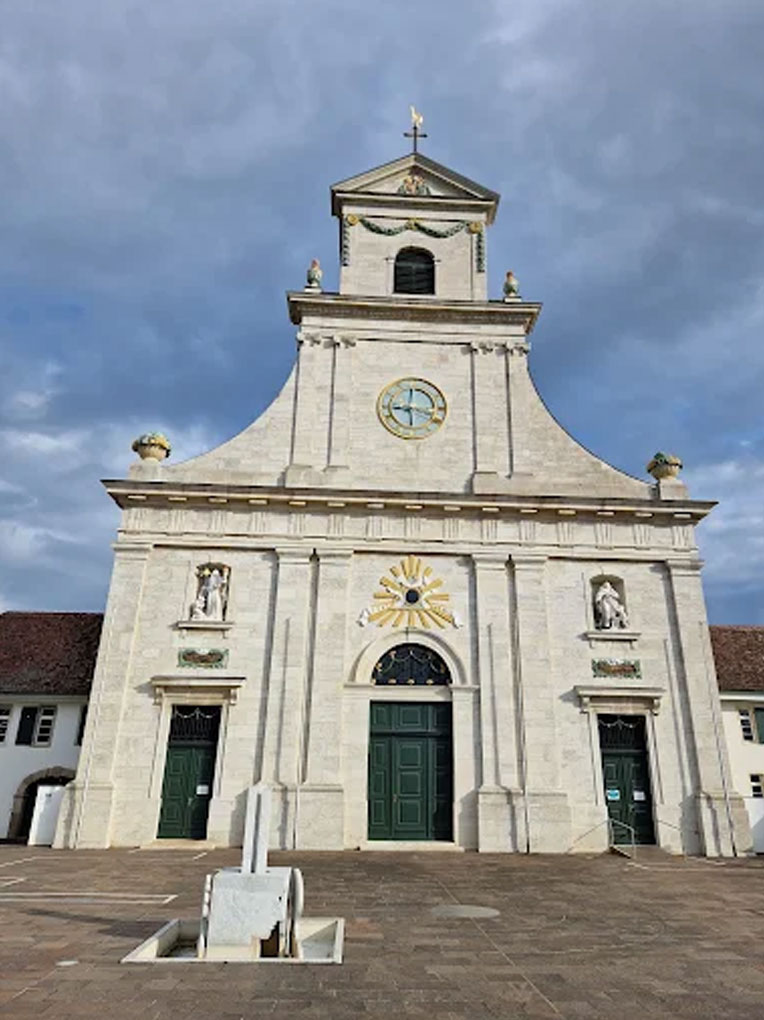
Mariastein Abbey is a Benedictine monastery in a small town called Metzerlen-Mariastein, in Switzerland’s Solothurn canton. It’s one of the country’s top pilgrimage spots, right after Einsiedeln Abbey. People also call it Maria im Stein or, in French, Notre Dame de la Pierre. The abbey has ties to another place called Beinwil Abbey, so sometimes it’s known as Beinwil-Mariastein. The abbots even keep the old title connected to Beinwil. The whole monastery is protected as an important historic site, and it’s got a long history that’s still felt today.
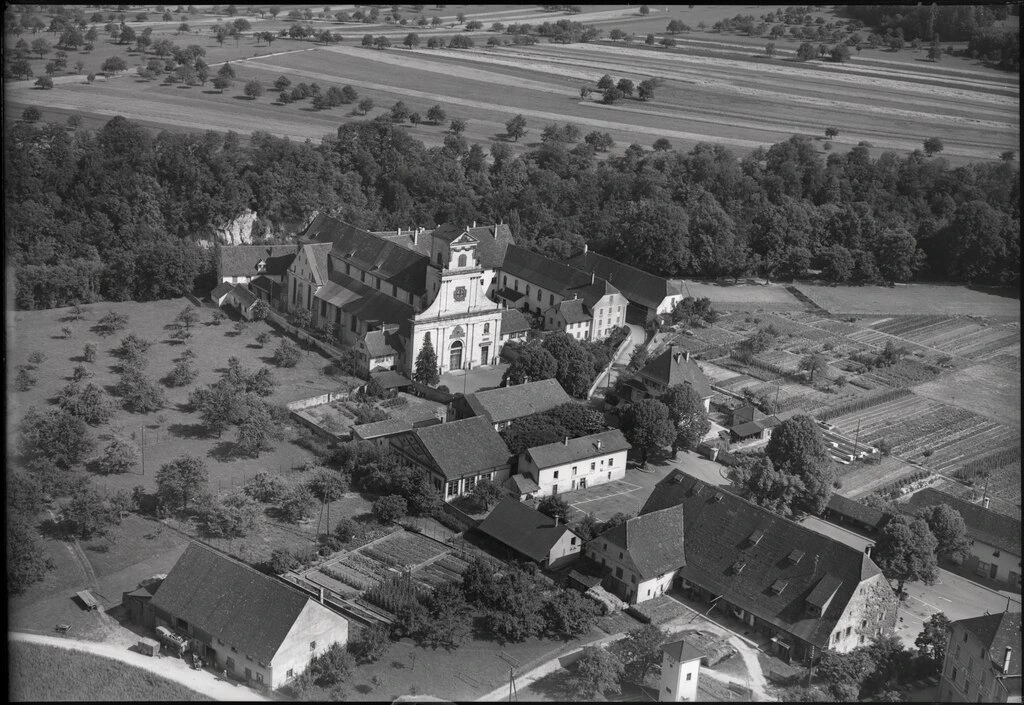
The story goes that a young shepherd boy was watching over his family’s cows up on the rocky hill where the abbey stands today. His mother was resting in a little cave nearby because it was hot in the afternoon. While she was asleep, the boy wandered too close to the edge of a steep cliff and fell down. When the mother woke up and couldn’t find him, she rushed down the valley and to her surprise, she found her son safe and unharmed. He said a woman caught him while he was falling. The father was sure this woman was the Virgin Mary. To thank her, he built a small chapel in the cave where the mother had rested. This spot quickly became a place where many pilgrims came to visit. The first time this legend was written down was in 1442, but it probably happened about 100 years earlier. The original chapel was destroyed by fire in 1466 but was rebuilt a few years later. Then in 1530, during the Reformation, the chapel was looted and destroyed. A man named Jakob Augsburger from Swabia rebuilt it.
Pilgrimages slowed down during the Reformation but started again after another miracle in 1541. A nobleman named Hans Thüring from the Reichenstein family survived falling from the same cliff. After that, the chapel became a family shrine for the Reichensteins and was called the Reichensteiner Chapel. In 1636, the Benedictine monks from Beinwil Abbey took over caring for the chapel. Beinwil Abbey itself had a long history, dating back to the 1100s, but had fallen into ruins. The abbot Fintan Kiefer moved the monastery from its old location to Mariastein in 1648, built a new monastery and church there, and brought the old chapel and monastery histories together. Later, the monastery was closed down twice once in 1792 during the French Revolution, and again in 1874 because of political conflicts in Switzerland. After the second closure, the monks moved around a bit, first to France, then to Austria, before finally settling in Bregenz. When the Gestapo shut down the Bregenz monastery in 1941, the monks returned to Mariastein, where they were welcomed back. The abbey officially reopened in 1971.
Architecture of Basilica Abbey of Our Lady, Metzerlen-Mariastein, Switzerland
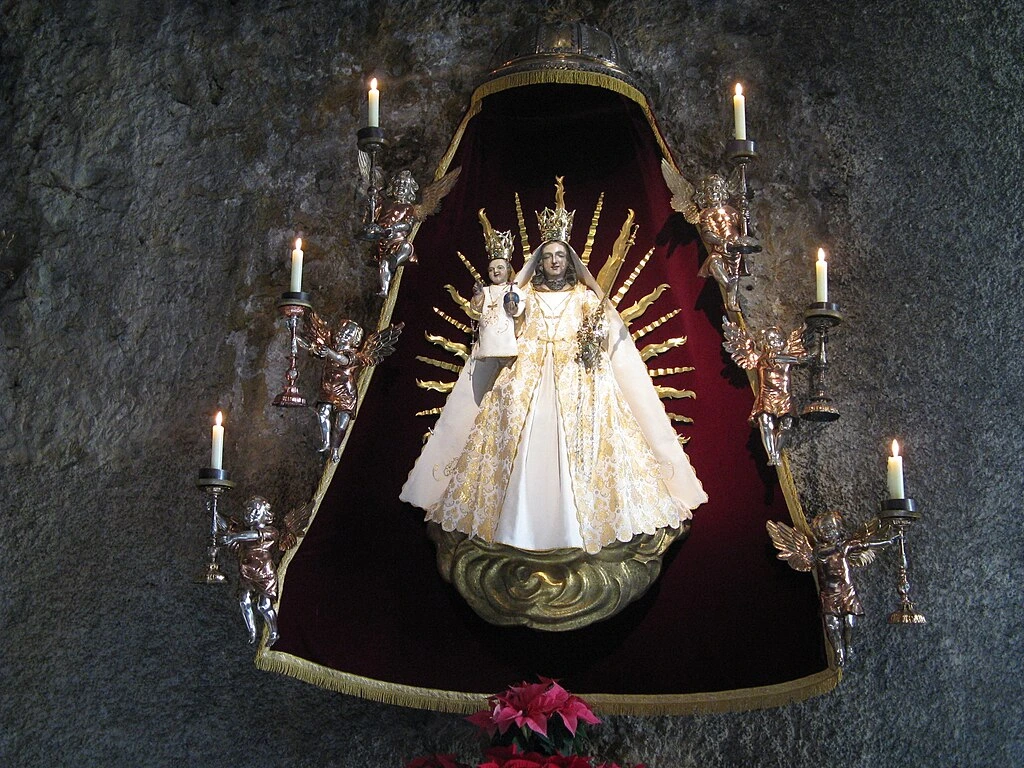
Miraculous image and grace chapels
The miraculous image of Our Lady of Consolation is located in a cave chapel beneath the present-day Benedictine monastery church, which can be reached via 59 steps. Countless votive tablets along the path to the grotto proclaim that the Madonna still performs miracles for some. Mary, in her magnificent robe, stands literally “in the stone” that is, free in the rock face and carries the Child in her right arm. Six putti holding candlesticks surround the miraculous image, which in its current form dates back to the 17th century. Nothing is known about the appearance of the destroyed Gothic predecessor.
To the left of the miraculous image is a sacrament altar from 1645, from the workshop of the Solothurn sculptor Heinrich Scharpf. It depicts the Virgin Mary with Child and saints in a Baroque marble structure with turned columns. In commemoration of the second rock miracle performed by the Reichenstein Junker, a Reichenstein Chapel, also known as the Seven Sorrows Chapel , has been rebuilt in the northeast corner of the monastery complex . It contains a late Gothic tabernacle (1520) and a linden wood statue of the Virgin Mary (estimated to be from the second half of the 17th century) in an alabaster altar from 1824.
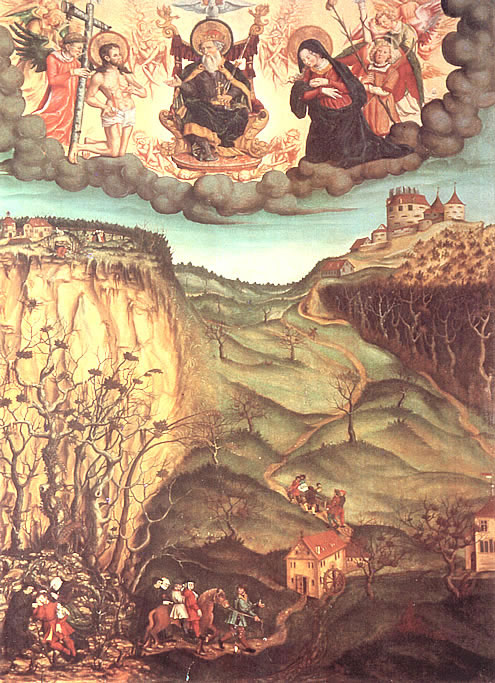
The Monastery Church – A Story Carved in Stone
The monastery church, as it stands today, has been through a lot. It was built between 1648 and 1655 by Urs Andermatt from Solothurn, under the leadership of Abbot Fintan Kieffer, who was in charge from 1633 to 1675. The church has changed a bit over time new layers added, old ones uncovered. Between 1830 and 1834, Jakob Begle, an architect from Vorarlberg, gave it the neoclassical facade we see now. He used Jura limestone with sandstone details, and it really gave the place its signature look.The church has seen its fair share of restoration too. Under Abbots Mauritius Fürst and Lukas Schenker, major work was done from 1973 all the way to 2000. In 1999 and 2000, the facade was cleaned up, and they stripped away old layers of paint to bring out what was hidden underneath. Inside, it’s a three-nave basilica. It started out in a late Gothic style—you can still see that in the cross-vaulted choir ceiling. But between 1900 and 1934, the interior went through two big changes in a neo-Baroque style. It gave the place more flair, more detail. The most recent restoration brought everything back to life again. Look up, and you’ll see ceiling frescoes telling the story of the Miracle of Our Lady of the Rock from 1543. Other paintings show different scenes of the Madonna. Along the walls, you’ll find moments from the life of Saint Benedict of Nursia quiet, powerful images. And then there are the treasures inside. The wooden pulpit, made in 1733, shows the Apostles carved into it. The choir is enclosed by a wrought iron gate from 1695 a gift from none other than King Louis XIV. The high altar, made in 1680, is dedicated to Saint Benedict. It’s detailed, filled with marble statues, twisted columns, and altar paintings that change with the seasons. This isn’t just a building. It’s a timeline of devotion, of stories passed down, and of the people who kept this place alive through the centuries. Every stone, every painting, every statue has its own little piece of history.
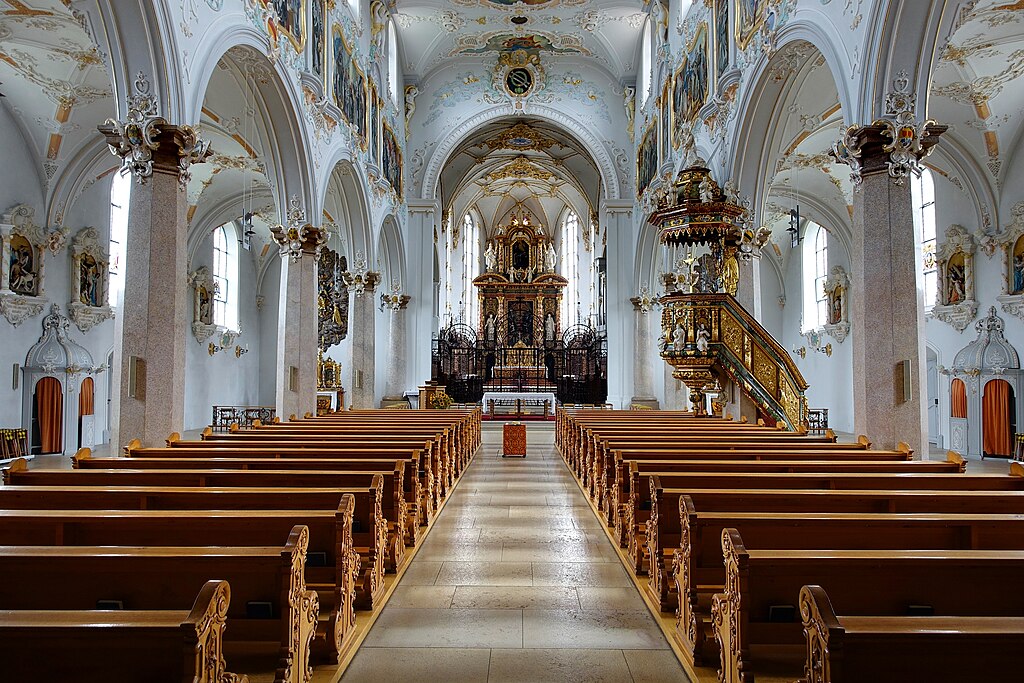
Inside the Mariastein Monastery Church
Walking into the church at Mariastein, the first thing you notice is the space it’s wide, peaceful, and full of quiet details. The church is built in a three-aisled basilica style. Originally, it had that late Gothic look, and you can still see it if you look up at the choir vaults they’ve got that classic net-like pattern, called reticulated vaulting. But things changed over time. Between 1900 and 1934, the inside was redone twice in a neo-Baroque style, which gave it a softer, more decorative feel. Between 1931 and 1933, a painter named Lothar Albert from Basel added new life to the ceiling and walls. He painted the large ceiling frescoes showing the “Miracle of the Fall” and various Marian scenes. Along the nave, you’ll also see a whole series of images that tell parts of Saint Benedict’s life. It’s like walking through a story. The church also has some beautiful old pieces of furniture and decoration. The pulpit, made in 1733, is wooden and carved with figures of the apostles standing around it. There’s a wrought iron grille around the choir, built in 1695. That was a gift from King Louis XIV of France yes, the same Louis XIV. And then there’s the high altar, made in 1680 and dedicated to Saint Benedict. It’s a showpiece richly decorated, with twisted columns, statues carved from marble, and altarpieces that they switch out depending on the time of year. A big moment in the church’s history came on July 5, 1926, when Pope Pius XI gave it the title of a minor basilica. A little over a month later, on August 15, the image of the Virgin believed to be miraculous was officially crowned. Luigi Maglione, the papal nuncio to Switzerland at the time, did it on behalf of the Pope. So when you’re inside, you’re not just looking at art or old stone. You’re surrounded by centuries of faith, prayers, and people who came here hoping for healing, answers, or maybe just a little peace.
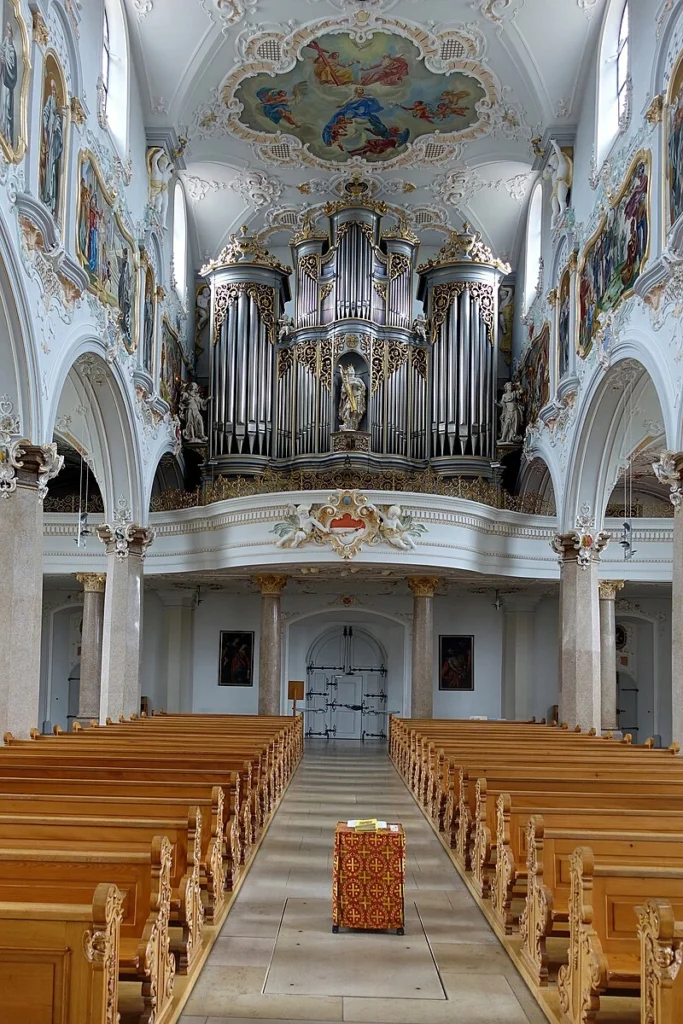
Organs
The monastery church has two main organs and a smaller one in the Chapel of Grace. The big organ was first built in 1836 by Johann Burger from Laufen. Over the years, it got fixed up a few times to keep up with changing music styles. But by 1970, it was in pretty bad shape and couldn’t be played anymore. So in 1978, a company called Metzler Orgelbau made a new one using the same design as the old one. It’s got 38 stops and three keyboards plus a pedalboard. The choir organ is newer it was built in 2001 by Roman Steiner from Fehren. It has 16 stops with two keyboards and a pedal. This one replaced an older organ from 1970. The choir organ is mostly used to help the monks sing during their prayers but can also be played with the big organ. There’s also a small organ in the Chapel of Grace, also made by Roman Steiner around 1988 or 1989. It replaced an even older organ from 1824, probably made by Johann Burger too. This one has one keyboard and 10 stops.
Bells
The church has six old bells:
- The biggest bell weighs about 3,600 kilos.
- Most of the bells were made by François Robert-Rollet in Urville around 1832.
- Others were made by the Rüetschi Brothers from Aarau in 1864 and 1925.
Each bell has a different note, like G sharp, C sharp, and E.
Church Treasure
A lot of the old treasures the church had are gone now. But there’s one really special thing called the Essostab. It came from an older monastery in Beinwil, though it probably wasn’t made there. It’s from way back in the time of Frederick II, down in southern Italy or Sicily. It’s an ivory crucifix with a little doe and a bird carved on it. The silver frame around it was added later, sometime in the 1500s. There’s also a beautiful chalice made by Wilhelm Krauer in the 1600s. It’s decorated with colorful enamel and some precious stones a real piece of Baroque art.
The Monastery
The monastery is built in a square shape, but they had to work around some big rocks nearby. So if you look at it from the valley, it kind of looks like a small fortress. The convent building sits on the east side, right next to the rock. The church is on the north side, and there’s a building called Glutzbau with the Reichenstein Chapel. To the south, the cloister is part of the library building. On the west side, there’s an open wing that used to be a cloister but now serves as the monastery gate. If you enter from the west, you’re following the old pilgrimage path. The front yard of the church was fixed up in 1997, and now it’s a popular place to visit. There’s a hotel in a timber-framed building, plus a farm where they sell organic fruits and veggies. That farm belonged to the Reichenstein family until the 1800s. There’s also a shop selling religious souvenirs.
Feast Day
Feast Day : 21 June
The main feast day of the Basilica Abbey of Our Lady, Metzerlen-Mariastein, Switzerland, is June 21, celebrating the re-establishment of the abbey in 1971. Additionally, important Marian feast days like August 15 (Assumption of Mary) and September 8 (Nativity of Mary) are also observed there.
Church Mass Timing
Monday to Sunday : 09:00 AM.
Church Opening Time:
Monday to Sunday : 6:30 am – 8:15 pm.
Contact Info
Address : Mariastein Abbey
Klosterpl. 1, 4115 Metzerlen-Mariastein, Switzerland.
Phone : +41 61 735 11 11
Accommodations
Connectivities
Airway
Basilica Abbey of Our Lady, Metzerlen-Mariastein, Switzerland, to EuroAirport Basel-Mulhouse-Freiburg (EAP), distance 35 min (28.5 km) via D473.
Railway
Basilica Abbey of Our Lady, Metzerlen-Mariastein, Switzerland, to Take Away – Basel – Bahnhof SBB Centralbahnstrasse, distance between 27 min (15.0 km) via Talstrasse.

